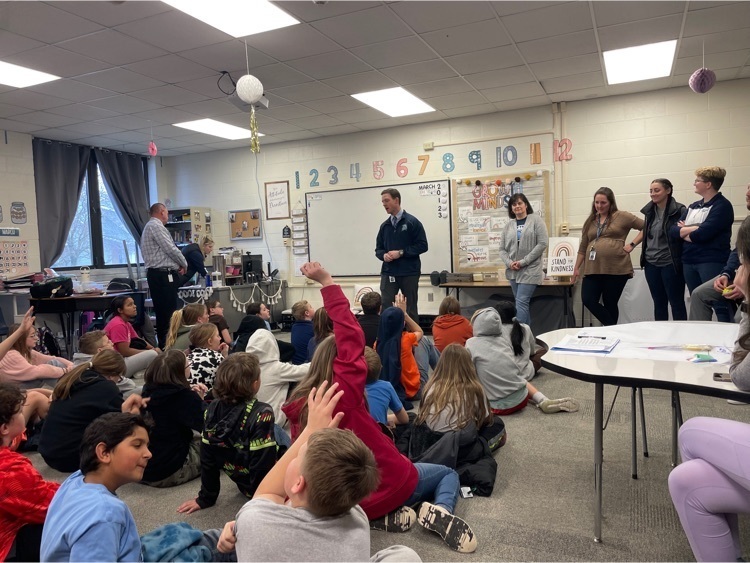Oly South celebrated our terrific teachers by treating them to a Walk of Champions Parade! We appreciate everything you do everyday!
Click the link below to watch our celebration:
https://bit.ly/44hCT9s


Thank you to all of the grandparents and special friends who came out to celebrate Grandparents' Day today at Olympia South! We appreciate all of the staff, parents, and volunteers who made today such a success!










It’s National Administrative Professional’s Day today! To change it up a bit, here is a short poem to celebrate all of the ways that you make Olympia a wonderful place to work and visit. THANK YOU!
Admin assistants, we sing your praise,
For all the tireless work you do each day,
From greeting visitors with a warm smile,
To answering phones with patience and style.
Your skills are many, and your commitment is vast,
You handle all our needs, from first to last,
The schedules, the paperwork, the meetings too,
We don't know how we'd manage without you.
You're often the first friendly face we see,
And your hard work sets the tone for the day to be,
We know we can count on you, without fail,
To keep our schools running smoothly and prevail.
In the midst of all the serious work,
Know that we love all of your little quirks,
Maybe a funny joke or a silly pun,
To brighten up our day and make it fun.
So here's to you, admin assistants,
We appreciate you more than words can say,
You make our school a better place,
And we thank you for it every day!

What a perfect day for our 3rd grade walking field trip to celebrate Earth Day and learn how we can all "do our part". We learned about electric cars, ate Earth Day cookies, and helped clean up our town! Thanks to all who supported our day!!




On Friday we celebrated our Super Spartans for March. These students use their problem solving skills to turn challenges into opportunities! Great job Spartans!
Click the link below to see our Spartan parade.
https://bit.ly/3UK7CHV

Fire Updates: OHS and OMS students will not have school tomorrow, April 14th. There will *not* be a remote learning day. Elementary school will be in attendance for a normal school day. Thank you for all of the support and concern that was expressed today. 💙

Updates: All OHMS students have now either left campus to drive home or have evacuated to Minier Christian Church. Parents, you must pick up your children from the designated evacuation location at Minier Christian Church. Lines for pick up are long, so please be patient as all of the necessary evacuation procedures are followed. At Minier Christian Church you will be greeted by an adult and must present an ID to pick up your child(ren). No individuals will be allowed on the OHMS campus for the rest of the day. Fire officials will be on site all evening completing their necessary work.
More information will be shared soon regarding the status of the building and plans for school operations tomorrow.
All after school events at Olympia CUSD 16 have been cancelled for this evening due the the fire at the OHMS campus.
There is an active fire at the middle school / high school campus. All students and staff are safe.
Do not come to the OHMS campus as this will interfere with the evacuation process.
High school students who can drive will be sent home. All other high school and middle school students are being evacuated to our designated evacuation zone at Minier Christian Church. Pickup will occur there. More information regarding the timeline for pickup will be shared soon.
Due to buses needed for the evacuation, elementary buses will run their afternoon routes but they will not be on time. Parents can pick up their elementary students from school, but first need to call their child's school office.
We will continue to share details as soon as we can.
Save the Date!!! 5th grade students and families are invited to attend 6th Grade Orientation on May 4th. The evening will include sessions to assist students in a smooth transition to Olympia Middle School. Dinner and childcare are provided. Please RSVP using the QR code or the following link: https://docs.google.com/forms/d/e/1FAIpQLSdfxCtuu13-E045FybXJCuGxF4-smRXU93m66_oCRNcsTvofA/viewform

Olympia South 5th graders participated in a Hygiene Refresher Course presented by Illinois State University Mennonite College of nursing students today. ISU MCN students have been with us this semester as part of their Pediatric Nursing class. The 5th students were given bags full of helpful items to stay clean, like deodorant, tooth brushes, tooth paste, shampoo/conditioner, and lotion . Thank you Oly South PTO and a very kind former ISU MCN student for your donations and our current nursing students for some great reminders to stay clean and healthy.




Thank you to all our Spartan Paraprofessionals that work tirelessly for our students. We could not survive without you!

Spring McTeacher's Night Returns! Stop by the McLean McDonald's to support Oly South.

This week, middle school staff took a trip to each elementary school to talk to 5th graders about what it is like to be a student at OMS. This trip is the beginning of a number of orientation events to support students in their successful transition to 6th grade!



Grandparents' Day is Back! OSE can't wait to host this event on April 28th. We will share specific details when we return from spring break.

The OHS NHS is sponsoring an Easter Egg Hunt at OMS on Sunday, April 2 from 1-3. In addition to the egg hunt, there will be crafts, face painting, games, and more. Ages 2-8. The event is $5. All proceeds benefit St. Jude.
Make a reservation by email:
amanda.hapgood@olympia.org

PreK has been visited by a Leprechaun! Mrs. Castillo's PM class is ready for St. Patrick's Day! ☘️





On Friday Oly South held our Parade of Champions, celebrating our Super Spartans for February. These students show kindness everyday to their classmates and teachers! Great job Spartans!
http://bit.ly/3JDlAav

Spartan Staff spent the morning in various professional development sessions on topics including trauma responsive instruction, restorative practices, special education strategies for students, elementary science instruction, and regulation strategies for students. Thank you to all our presenters!


The 2023 Spartan Retirees were recognized this morning. Congrats to Dr. Jodlowski, Mrs. Deal, Mrs. McDannald, and Mr. Stine. Thank you all for your dedication to our students and families over the years. You will be missed!

